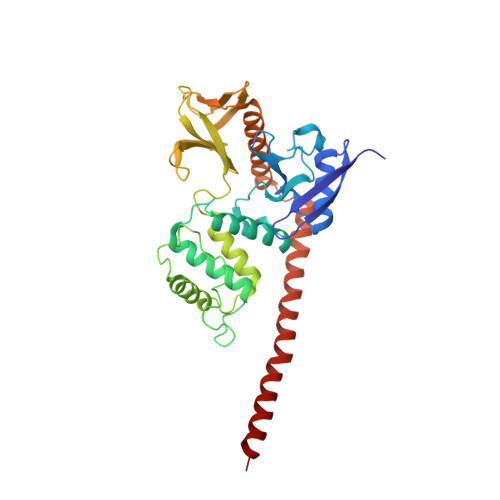The 2.7 A Crystal Structure of the Activated Ferm Domain of Moesin: An Analysis of Structural Changes on Activation
Edwards, S.D., Keep, N.H.(2001) Biochemistry 40: 7061
- PubMed: 11401550
- DOI: https://doi.org/10.1021/bi010419h
- Primary Citation of Related Structures:
1E5W - PubMed Abstract:
Moesin binds to a large range of proteins through its N terminal FERM (band 4.1, ezrin, radixin, moesin) domain. In full-length moesin isolated from cells, this binding is masked by binding to the C-terminal domain of moesin (C-ERMAD). Activation takes place by phosphorylation of Thr 558 in the C-ERMAD, which releases the C-ERMAD. A recently determined crystal structure of a noncovalent complex of the FERM and C-ERMAD domains showed for the first time that the structure of the FERM domain consists of three subdomains, each of which is similar to known structures. The structure reported here also contains a unique 47-residue helix pointing away from the FERM domain at the start of the alpha domain, in agreement with secondary structure predictions. Removal of the C-ERMAD does not result in a huge rearrangement of the FERM domain, but comparison with the activated radixin structure shows a consistent set of small changes. Not surprisingly, the exposed C-ERMAD binding area interacts in crystal contacts. More interestingly, a negatively charged peptide binds to the inositol site in a crystal contact and causes a greater conformational change in the structure than inositol.
- BBSRC Bloomsbury Centre for Structural Biology and School of Crystallography, Birkbeck College, University of London, Malet Street, London WC1E 7HX, UK.
Organizational Affiliation:
















